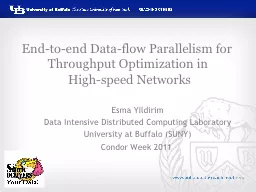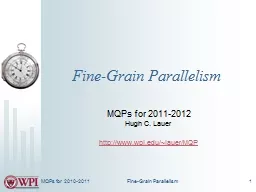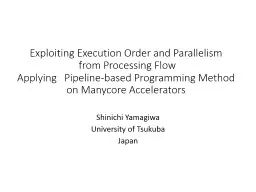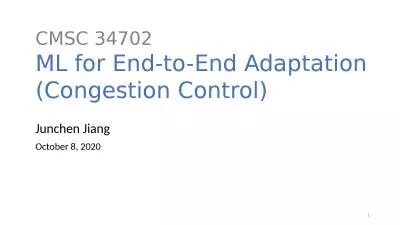PPT-End-to-end Data-flow Parallelism for Throughput Optimizatio
Author : tatyana-admore | Published Date : 2016-03-07
Highspeed Networks Esma Yildirim Data Intensive Distributed Computing Laboratory University at Buffalo SUNY Condor Week 2011 Motivation Data grows larger hence
Presentation Embed Code
Download Presentation
Download Presentation The PPT/PDF document "End-to-end Data-flow Parallelism for Thr..." is the property of its rightful owner. Permission is granted to download and print the materials on this website for personal, non-commercial use only, and to display it on your personal computer provided you do not modify the materials and that you retain all copyright notices contained in the materials. By downloading content from our website, you accept the terms of this agreement.
End-to-end Data-flow Parallelism for Throughput Optimizatio: Transcript
Download Rules Of Document
"End-to-end Data-flow Parallelism for Throughput Optimizatio"The content belongs to its owner. You may download and print it for personal use, without modification, and keep all copyright notices. By downloading, you agree to these terms.
Related Documents














